 Creepy
Creepy  Creepy
Creepy  Technology
Technology 10 Scientific Breakthroughs of 2025 That’ll Change Everything
 Our World
Our World 10 Ways Icelandic Culture Makes Other Countries Look Boring
 Misconceptions
Misconceptions 10 Common Misconceptions About the Victorian Era
 Mysteries
Mysteries 10 Strange Unexplained Mysteries of 2025
 Miscellaneous
Miscellaneous 10 of History’s Most Bell-Ringing Finishing Moves
 History
History 10 Great Escapes That Ended Right Back in Captivity
 Weird Stuff
Weird Stuff 10 Fascinating Things You Might Not Know About Spiders
 Food
Food 10 Everyday Foods You Didn’t Know Were Invented by the U.S. Military
 History
History 10 Odd Things Colonial Americans Kept at Home
 Creepy
Creepy 10 More Representations of Death from Myth, Legend, and Folktale
 Technology
Technology 10 Scientific Breakthroughs of 2025 That’ll Change Everything
 Our World
Our World 10 Ways Icelandic Culture Makes Other Countries Look Boring
Who's Behind Listverse?

Jamie Frater
Head Editor
Jamie founded Listverse due to an insatiable desire to share fascinating, obscure, and bizarre facts. He has been a guest speaker on numerous national radio and television stations and is a five time published author.
More About Us Misconceptions
Misconceptions 10 Common Misconceptions About the Victorian Era
 Mysteries
Mysteries 10 Strange Unexplained Mysteries of 2025
 Miscellaneous
Miscellaneous 10 of History’s Most Bell-Ringing Finishing Moves
 History
History 10 Great Escapes That Ended Right Back in Captivity
 Weird Stuff
Weird Stuff 10 Fascinating Things You Might Not Know About Spiders
 Food
Food 10 Everyday Foods You Didn’t Know Were Invented by the U.S. Military
 History
History 10 Odd Things Colonial Americans Kept at Home
10 Amazing Women You’ve Never Heard Of
While you’ve probably heard of Rosa Parks, Harriet Tubman, and Susan B. Anthony, history is filled with amazing women whom most people have never heard of. Whether this is due to the misogynistic nature of past historians or simply because people failed to take note of their work while they were alive, many women have not received the recognition they are due.
There are thousands of talented women who have made the world a better place, but these 10 are some of the most influential. Odds are, you haven’t heard of many of them, but all 10 deserve recognition for their work. Due to their incredible accomplishments, these women are presented in no particular order as they stand together equally.
10 Jovita Idar
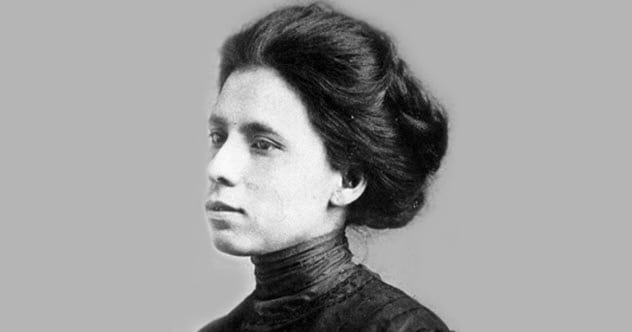
Long before the United States considered giving women the right to vote, Jovita Idar was fighting against a patriarchal society that oppressed her for both her femininity and her origins. Born in Laredo, Texas, to Mexican immigrants, Idar grew up in a place and time which wasn’t friendly to Mexican Americans.
In her early career, she became a teacher but was frustrated by the lack of supplies hindering her ability to teach. Seeing her impact diminished, she put her voice to work and became a journalist.
She wrote about inequality and segregation throughout her community. She also supported numerous causes created to help women gain a voice in politics, and she became an outspoken critic of policies she deemed shameful.
While working for the newspaper El Progreso, she called out President Wilson’s dispatch of troops to the southern border, which angered the US Army and the Texas Rangers. The latter came to the newspaper to shut it down.[1]
Refusing to back down, Idar stood in the doorway and kept them from entering. The paper was later shut down, but her defiant stance against the Rangers—all of whom were armed and angry with her—became a symbol of resistance for women and Mexican Americans across the nation.
9 Shirley Chisholm
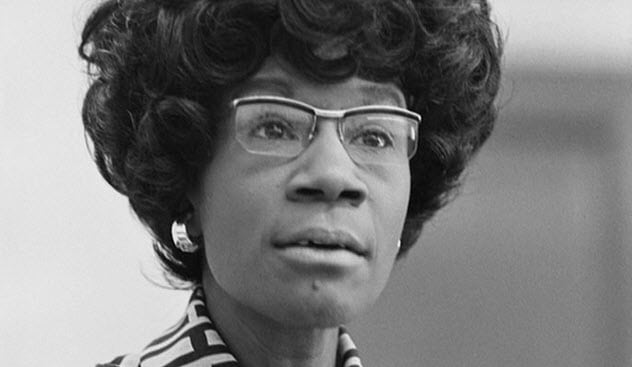
Throughout her political career, Shirley Chisholm racked up a lot of firsts. She holds the honor of being the first African-American woman elected to the United States Congress, having represented New York’s 12th Congressional District. She retained the office for seven terms between 1969 and 1983.
Not wanting to keep her options limited, she became the first black candidate to vie for a major party’s nomination for the president of the United States in 1972. She was also the first woman to run for the Democratic Party’s nomination for that office.
Chisolm’s work in the Congress established her as a woman of the people. She worked tirelessly on bills supporting a revocation of the draft, an establishment of a minimum wage for domestic workers, and the Equal Rights Amendment.[2]
Her legacy has been credited as helping to “pave the way” for the 2008 Democratic presidential primary battle, which pitted an African American man against a woman. No matter who won that battle, a new “first” would have been achieved. As we all know, the primary’s results helped to establish the first African-American presidency in the United States.
8 Sojourner Truth
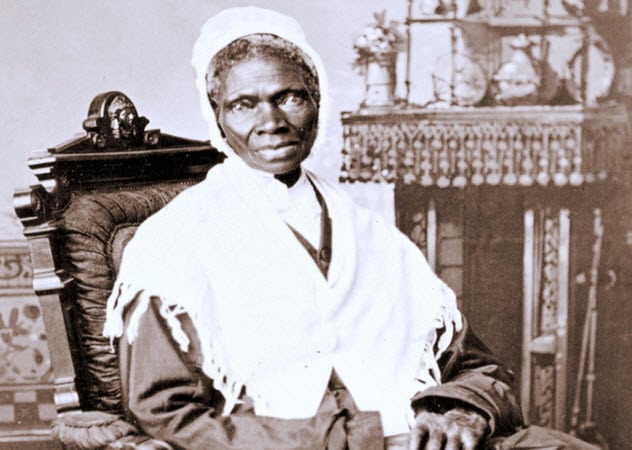
Sojourner Truth was born into slavery as Isabella Baumfree in 1797. She escaped following the birth of her daughter in 1826.
She left behind a son but was able to recover him when she successfully sued a white man for his custody in 1828. That made her the first black woman to win a case of that type. Her son Peter had been illegally sold to Alabama from New York following that state’s emancipation.
She continued to work for several years. In 1843, she changed her name to Sojourner Truth and became a Methodist.[3] At this time, she became an outspoken abolitionist and supporter of pacifism and the women’s rights movement. She came into contact with the likes of Frederick Douglass, who influenced her work.
In 1850, she published a memoir titled The Narrative of Sojourner Truth: A Northern Slave. The following year, she gave her most famous speech, “Ain’t I a Woman,” at the Ohio Women’s Rights Convention. Her words had an impact and were recalled for decades in both the women’s rights movement as well as the abolitionist movement.
She was chosen as one of the women whose work influenced the Nineteenth Amendment to the US Constitution and will be featured on the back of the $10 bill set for release in 2020.
7 Huda Sha’arawi
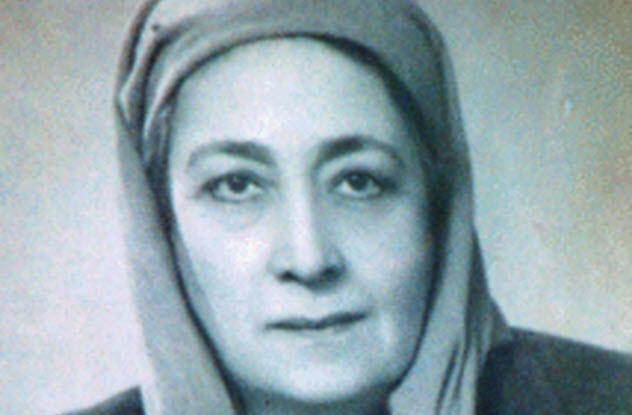
Huda Sha’arawi was born into a wealthy family in Upper Egypt. Her father, Muhammad Sultan, was the first president of the Egyptian Representative Council, so it stands to reason that she grew up comfortably.
While this is true, she was a woman in 19th-century Egypt, which meant she either had to live at home or in a harem. After she was married to her cousin and later separated, she found some independence and furthered her education. This led Sha’arawi to feminism, where she became one of the first women to remove her veil in public. Within a decade, the majority of women in Egypt were doing the same.
She hosted women’s groups in her home and brought other women into public, which was unheard-of at the time. In 1919, she led the first women’s street demonstration during the Egyptian Revolution and was subsequently elected as the president of the Wafdist Women’s Central Committee.[4]
Though few of her demands were ever met by the government in her lifetime, her work for women’s rights helped lay the groundwork for future gains by Egyptian women. She is remembered as one of the earliest leaders of feminism and women’s rights in Egypt by Arab women around the world.
6 Lilian Bland
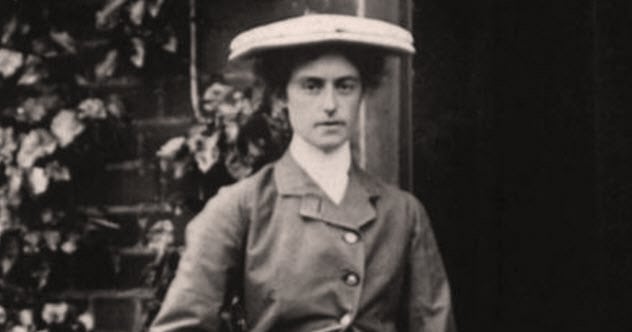
While most people know of Amelia Earhart, few recall the accomplishments of Lilian Bland. She was one of the first women in the world to design, build, and fly an airplane.
In 1910, when few had ever seen an airplane, she became interested in flying after receiving a postcard from her uncle in Paris. Determined to fly, she got to work and made a biplane glider which she ironically named Mayfly. The glider worked, but she wanted to achieve powered flight like the Wright Brothers. So she ordered a two-stroke engine. It arrived before the fuel tank, but that didn’t slow her down.
She constructed a tank out of an empty bottle of whiskey and her deaf aunt’s ear trumpet. Although it didn’t work, her perseverance paid off. Once the fuel tank arrived, she became the first woman to fly an aircraft in Ireland.
Her father didn’t like the idea of his daughter flying and offered to buy her a car. It actually worked, and she taught herself to drive. Later, she ran a car dealership in Belfast and became Ford’s first agent in Northern Ireland.
Lilian Bland was always unconventional. But her need to fly helped prove the innovation of women, and she helped inspire others to achieve greatness all over the world.[5]
5 Margaret Hamilton
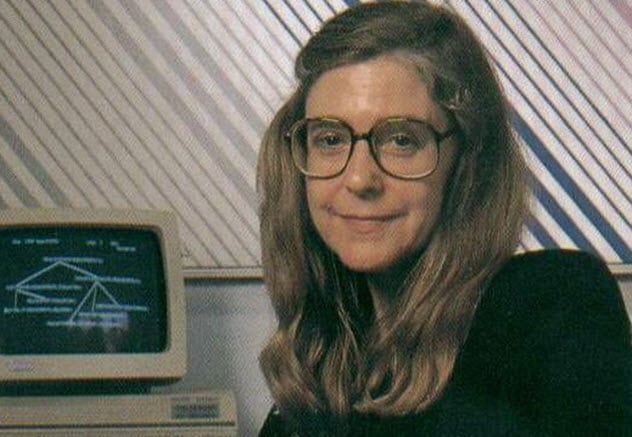
While everyone knows the name Neil Armstrong, few have ever heard of Margaret Hamilton, the woman who helped take men to the Moon in 1969. Hamilton was the director of the Software Engineering Division of the MIT Instrumentation Laboratory, which created the onboard flight software used by the Apollo space program.
Without her work, NASA would have been unable to navigate to the Moon. Her feat was recognized by President Barack Obama, who awarded her the Presidential Medal of Freedom in 2016.
Later in her career, she founded and became the CEO of Hamilton Technologies, Inc. The company went on to develop the Universal Systems Language, which has furthered system and software design.
Hamilton is credited with more than 130 published papers and is the woman who coined the phrase “software engineering,” a career which is predominantly held by men. She is one of the leading pioneers in computer science and easily one of the most important people involved with the Apollo missions.[6]
4 Roza Shanina
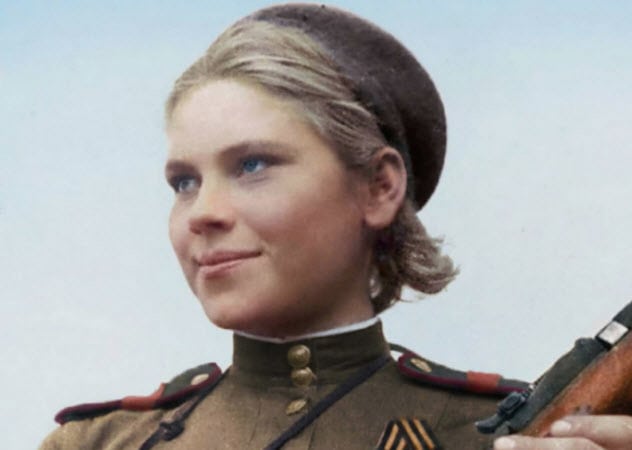
Roza Georgiyevna Shanina was a Soviet sniper who had 59 confirmed kills during World War II. She joined the military in 1941 following the death of her brother.
After volunteering for service, she became a marksman who would serve on the front lines, which was taboo for women. Although she isn’t the first female sniper, she is likely the best in terms of accuracy and number of kills in combat. During the Battle of Vilnius, she racked up 12 kills alone and became proficient in making doublets, which is hitting two targets with a single bullet.
She was the first female Soviet sniper to receive the Order of Glory, awarded for bravery in the face of the enemy. Her exploits were glorified in a Canadian newspaper in 1944 when she was called “the unseen terror of East Prussia.”
Shanina was killed in action when she covered an already wounded artillery unit commander, saving him from further injury. She is fondly remembered in Russia as a hero of the Soviet Union. She fought at a time when women were rarely considered for combat roles and when female snipers were traditionally removed from the front lines. But her abilities and accomplishments speak for themselves.[7]
3 Niloofar Rahmani
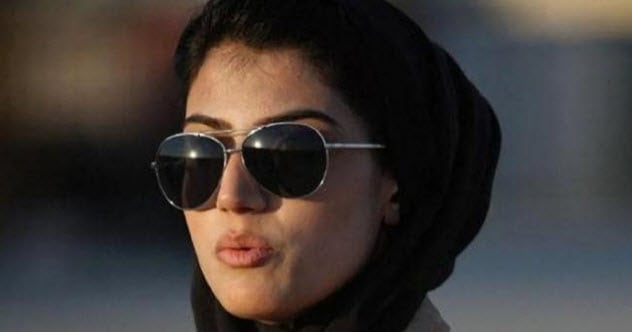
Prior to the US and allied invasion of Afghanistan in 2001, women were not allowed to do much in the country. They were forbidden from attending school beyond age eight and were unable to hold office, leave the house without an escort, or pretty much do anything they wanted.
Since the fall of the Taliban, things have changed. Niloofar Rahmani has established herself as the first female fixed-wing air force aviator in the country’s history. She is also the first female pilot in the Afghan military. Although she and her family have received death threats, she has persisted.[8]
Rahmani has been recognized internationally for her perseverance in attaining her role as the first woman to pilot an aircraft in the Afghan military. The US State Department gave her their International Women of Courage Award in 2015.
Following the international recognition she received, the death threats intensified and Rahmani remained in the US. She applied for and received asylum in the United States in 2018 and plans to become a military pilot in the United States Air Force.
2 Belva Ann Lockwood
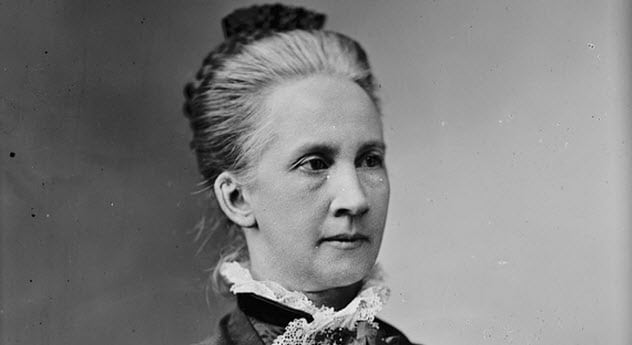
Long before women were given the right to vote in the United States, women like Belva Ann Lockwood were fighting for women’s rights. Lockwood graduated from law school and became one of the first women to practice law in the United States.
Though she wasn’t the first to practice, she did attain the distinction of becoming the first woman to successfully petition Congress in 1879 to practice before the United States Supreme Court. At that time, women weren’t even allowed to cast a ballot in the country. But she stood before the Supreme Court, which is an honor few attorneys ever achieve.
Lockwood ran for president of the United States in both 1884 and 1888 on the National Equal Rights Party ticket. Although she failed to win those elections, she did become the first woman to officially appear on a national ballot.
Lockwood has been honored for her achievements long after her death in 1917. Her likeness has been carved into ship figureheads and has appeared on United States Postal Service stamps. Ships have been named in her honor, and she was inducted into the National Women’s Hall of Fame in 1983.[9]
1 Hedy Lamarr
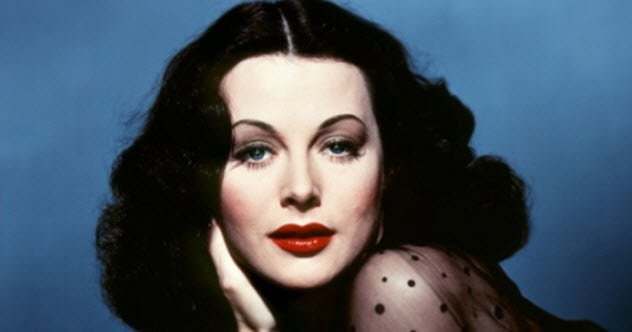
To be fair, you’ve probably heard of Hedy Lamarr. She was a famous Hollywood actress who was once called “the most beautiful woman in the world.” But that’s not what she should be recognized for.
Lamarr was an inventor, and her work helped develop the technology on which you may be reading this article. During World War II, Lamarr helped to develop frequency-hopping spread spectrum for radio signals, which was meant to be used in the development of torpedoes.
Torpedoes were nothing new, but they were susceptible to jamming until her technology could be implemented. Unfortunately, the navy didn’t take her work seriously until the 1960s when it was finally used in most of their communications tech. That technology became the underlying concept used by the cell phone network, Bluetooth, CDMA, and Wi-Fi communications.[10]
Her inventions revolutionized the world, and she was inducted into the National Inventors Hall of Fame in 2014. Her work in Hollywood is certainly noteworthy. But given her contributions to science and technology, she deserves widespread recognition for her accomplishments outside the industry.
Read about more amazing but largely unknown women on Top 10 Wild Women Of The West and Top 10 Fascinating Facts About Female Gladiators.








